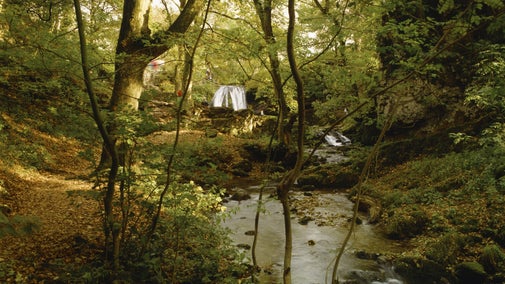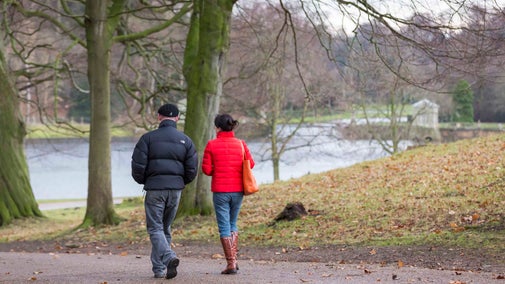Malham Tarn archaeology walk
Yorkshire
Uncover the history of Malham Moor on this archaeology trail. Explore this area of ancient limestone pastures, upland hill farms and the beautiful Malham Tarn, and discover archaeological remains in a landscape which has been used by man since the Mesolithic era.
Near to
Yorkshire DalesStart point
Street Gate (roadside parking). Grid ref: SD905656Trail information
*Mostly fields and unmade tracks. For further details, please see Terrain section.
**Grassy paths and gravel tracks with uneven footing. For further details, please see section marked Access.
***Dogs on leads are welcome under close control and on a lead. There may be livestock on this route. For further details, please see section marked Facilities.
More near here
Malham Tarn upland farm circular walk
Discover England's highest lime-rich lake, home to a unique community of rare plants and animals.

Malham village to Janet's Foss
Walk this easy-to-follow, there-and-back scenic walk from Malham village to the waterfall at Janet's Foss.

Get in touch
Malham Tarn Estate Office, North Wing, Malham Tarn House, Settle, North Yorkshire, BD24 9PU
Our partners

We’ve partnered with Cotswold Outdoor to help everyone make the most of their time outdoors in the places we care for.
You might also be interested in
Walking
Explore some of the finest landscapes in our care on coastal paths, accessible trails, woodland walks and everything in between. Find the best places to walk near you.

Walking in Yorkshire
Discover some of the best walks in Yorkshire, from rugged Pennine beauty spots, views over the coast, to parkland and meadows perfect for a family stroll. Most are dog friendly and many can be enjoyed as part of your day out to the nearest National Trust property.

Cotswold Outdoor: our exclusive walking partner
Learn about the National Trust’s ongoing partnership with Cotswold Outdoor. Find out how they help us care for precious places and the exclusive discount available for National Trust supporters.

Staying safe at National Trust places
The special places in National Trust care sometimes come with a few risks for visitors, be it coastline or countryside. Find out how to keep safe throughout your visits.

Follow the Countryside Code
Help to look after National Trust places by observing a few simple guidelines during your visit and following the Countryside Code.

Things to look out for in the Yorkshire Dales
Discover the Yorkshire Dales with their rolling countryside, steep-sided valleys, heather-covered moorland and a patchwork of dry stone walls and barns.

Outdoor activities in the Yorkshire Dales
Discover the best walking, running and cycling routes around the Yorkshire Dales.

